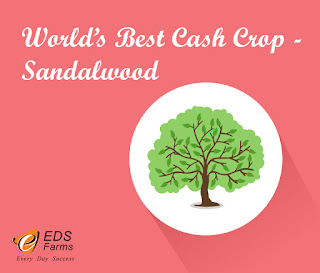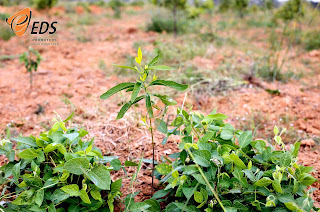There is a main reason that why sandalwood’s prices are so high because the production of sandalwood has decreased and with that demand is going to be increasing. The strong demand and supply reflected for the heartwood and the sapwood for oil extracting. Due to sandalwood’s high value and rising demand in internal and external markets, sandalwood prices have skyrocketed. We can notice that from the year 1900 to 1990 there is a main increase of price range from 365 Rs/ton to 78000 Rs/ton.
The rise in prices is partly due to a decrease in supplies. During the 1930s through the 1950s, the country’s production was roughly 4,000 tons of heartwood a year; now it is only 2,000 tons. Demand for sandalwood oil fell sharply in the 1970s as a result of very high prices and competition from synthetic substitutes. However, this largely affected the lower-priced formulations and the natural oil has retained its market in the top grade products. Demand now is influenced mostly by supply factors and the way in which this affects prices.
Indian Sandalwood currently trades at between $30,000 and $85,000 per ton, with Sapwood prices ranging from $1,000-$2,500 per ton. The recent clamp down by authorities to stop illegal trade in sandalwood has resulted in higher prices (10-12 percent above normal) for sandalwood at recent auctions. The volume of oil related exports does not seem to be affected. Indian exports to the U.S. are exceeding last year’s numbers, already amassing 7,000 kilos, according to figures from the U.S Department of Commerce, 2,000 kilos more than this time last year.
Sandalwood oil Prices:
Sandalwood oil extracted from the sapwood part of the wood. Sandalwood oil is precious and used for incense purpose. Sandalwood oil is one of the most highly priced items in the essential oil trade, reflecting the nature of the raw material source and the tightness of supplies. In the late 1980s it was fetching almost US$200/kg. Throughout 1992 the price of oil of Indian origin offered by London dealers was about US$140-150/kg; Indonesian oil was about US$5 lower. In mid-1993 the price of Indian oil rose again to US$180/kg and this was still the price in early 1994.
Sandalwood oil prices have risen to $2,000 per kg recently. Sandalwood from the Mysore region of Karnataka (formerly Mysore), and Marayoor forest in kerala, Southern India is high quality. Once Sandalwood was used for making furniture and caskets, but as the tree is nearly extinct, it is only used for the distillation of oil. Because of the threat of total extinction, this oil is now very well controlled in India – but has caused the price of this very fine oil to soar, and become one of the most expensive essential oils on the market – and for that reason we offer the pure oil, as well as a more affordable blend which contains 25% of the pure oil.
The prized properties of the Sandalwood tree are concentrated in the heartwood. As such, the price paid by a buyer will primarily depend upon the oil content and volume of the heartwood, with the more heartwood a piece of timber contains and higher the oil content, the greater its value. In addition to this, timber that has been value-added and timber that have been harvested from native stands will attract higher prices.
Article Coutesy : Hosursandal
Contact:
EDS Farms Private Limited
W101, 2nd Avenue, Anna Nagar ,
Chennai-600040, Tamilnadu.
044 45058348 | 42612288,
7358598899,7358596677
info@edsfarms.com
www.edsfarms.com
The rise in prices is partly due to a decrease in supplies. During the 1930s through the 1950s, the country’s production was roughly 4,000 tons of heartwood a year; now it is only 2,000 tons. Demand for sandalwood oil fell sharply in the 1970s as a result of very high prices and competition from synthetic substitutes. However, this largely affected the lower-priced formulations and the natural oil has retained its market in the top grade products. Demand now is influenced mostly by supply factors and the way in which this affects prices.
Indian Sandalwood currently trades at between $30,000 and $85,000 per ton, with Sapwood prices ranging from $1,000-$2,500 per ton. The recent clamp down by authorities to stop illegal trade in sandalwood has resulted in higher prices (10-12 percent above normal) for sandalwood at recent auctions. The volume of oil related exports does not seem to be affected. Indian exports to the U.S. are exceeding last year’s numbers, already amassing 7,000 kilos, according to figures from the U.S Department of Commerce, 2,000 kilos more than this time last year.
Sandalwood oil Prices:
Sandalwood oil extracted from the sapwood part of the wood. Sandalwood oil is precious and used for incense purpose. Sandalwood oil is one of the most highly priced items in the essential oil trade, reflecting the nature of the raw material source and the tightness of supplies. In the late 1980s it was fetching almost US$200/kg. Throughout 1992 the price of oil of Indian origin offered by London dealers was about US$140-150/kg; Indonesian oil was about US$5 lower. In mid-1993 the price of Indian oil rose again to US$180/kg and this was still the price in early 1994.
Sandalwood oil prices have risen to $2,000 per kg recently. Sandalwood from the Mysore region of Karnataka (formerly Mysore), and Marayoor forest in kerala, Southern India is high quality. Once Sandalwood was used for making furniture and caskets, but as the tree is nearly extinct, it is only used for the distillation of oil. Because of the threat of total extinction, this oil is now very well controlled in India – but has caused the price of this very fine oil to soar, and become one of the most expensive essential oils on the market – and for that reason we offer the pure oil, as well as a more affordable blend which contains 25% of the pure oil.
The prized properties of the Sandalwood tree are concentrated in the heartwood. As such, the price paid by a buyer will primarily depend upon the oil content and volume of the heartwood, with the more heartwood a piece of timber contains and higher the oil content, the greater its value. In addition to this, timber that has been value-added and timber that have been harvested from native stands will attract higher prices.
Article Coutesy : Hosursandal
Contact:
EDS Farms Private Limited
W101, 2nd Avenue, Anna Nagar ,
Chennai-600040, Tamilnadu.
044 45058348 | 42612288,
7358598899,7358596677
info@edsfarms.com
www.edsfarms.com






















